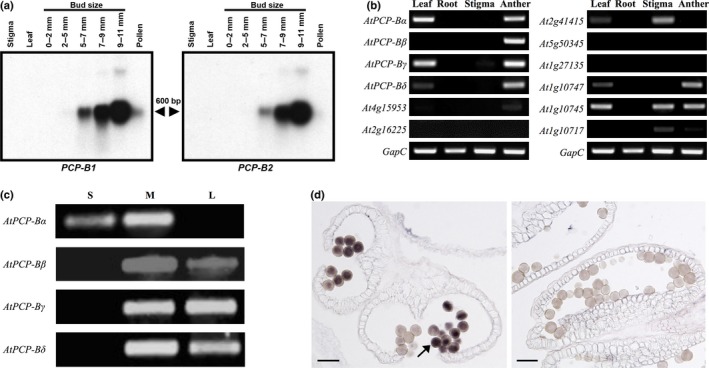Figure 4.

Brassica and Arabidopsis PCP‐Bs are gametophytically expressed late in pollen development. (a) mRNA gel blot analysis of Brassica oleracea PCP‐B1 and PCP‐B2 expression in leaves and reproductive tissue. Anthers from 9 to 11 mm buds have a fully degenerated tapetum and pollen is trinucleate. The arrows indicate the size of the transcript in base pairs. (b) Reverse transcription polymerase chain reaction (RT‐PCR) expression analysis of AtPCP‐B and AtPCP‐B‐like genes in Arabidopsis leaves, roots, stigmas and anthers (derived from stage 12 buds). GapC – cDNA input control for RT‐PCR. (c) AtPCP‐B gene expression in flower buds through development (stages 10–12). S, small (< 1 mm; uninucleate microspores); M, medium (c. 1–1.5 mm; binucleate pollen); L, large (> 1.5 mm; unopened buds, trinucleate mature pollen). Arabidopsis flower bud stages are as defined by Smyth et al. (1990). (d) RNA–RNA in situ hybridization study of AtPCP‐Bβ expression in Arabidopsis thaliana anthers. Left panel: transverse anther section treated with an antisense (+ve) AtPCP‐Bβ DIG‐labelled riboprobe, a clear signal (arrow) is observed within the majority of pollen grains. Right panel: longitudinal anther section treated with a control ‘sense’ (−ve) riboprobe with no signal being detectable in pollen grains. Bars, 20 μm.
